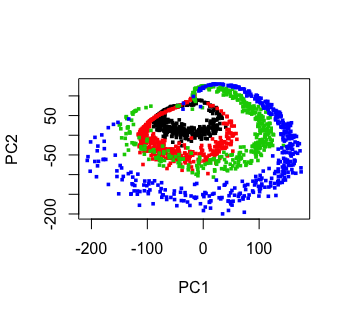fasteR: Fast Lane to Learning R!

“Becoming productive in R, as fast as possible”
Norm Matloff, Prof. of Computer Science, UC Davis; my bio
(See notice at the end of this document regarding copyright.)
This site is for those who know nothing of R, and maybe even nothing of programming, and seek QUICK, PAINLESS! entree to the world of R.
-
FAST: You’ll already be doing good stuff in R — useful data analysis — in your very first lesson.
-
For nonprogrammers: If you’re comfortable with navigating the Web and viewing charts, you’re fine. This tutorial is aimed at you, not experienced C or Python coders.
-
Motivating: Every lesson centers around a real problem to be solved, on real data. The lessons do not consist of a few toy examples, unrelated to the real world. The material is presented in a conversational, story-telling manner.
-
Just the basics, no frills or polemics:
- Notably, in the first few lessons, we do NOT use Integrated Development Environments (IDEs). RStudio, ESS etc. are great, but you shouldn’t be burdened with learning R and learning an IDE at the same time, a distraction from the goal of becoming productive in R as fast as possible.
Note that even the excellent course by R-Ladies Sydney, which does start with RStudio, laments that RStudio can be “way too overwhelming.”
So, in the initial lessons, we stick to the R command line, and focus on data analysis, not tools such as IDEs, which we will cover as an intermediate-level topic. (Some readers of this tutorial may already be using RStudio or an external editor, and the treatment here will include special instructions for them when needed.)
-
Coverage is mainly limited to base R. So for instance the popular but self-described “opinionated” Tidyverse is not treated at first, partly due to its controversial nature (I am a skeptic), but again mainly because it would be an obstacle to your becoming productive in R quickly. A later lesson to be added will introduce Tidy (defined as dplyr and pipes) and compare it to base-R.
While you can learn a few simple things in Tidy quickly, thinking you are learning a lot, those things are quite limited in scope, and Tidy learners often find difficulty in applying R to real world data. Our tutorial here is aimed at learners whose goal is to USE the R system productively in their own data analysis.
-
Nonpassive approach: Passive learning, just watching the screen, is NO learning. There will be occasional Your Turn sections, in which you the learner must devise and try your own variants on what has been presented. Sometimes the tutorial will be give you some suggestions, but even then, you should cook up your own variants to try. Remember: You get out what you put in! The more actively you work the Your Turn sections, the more powerful you will be as an R coder.